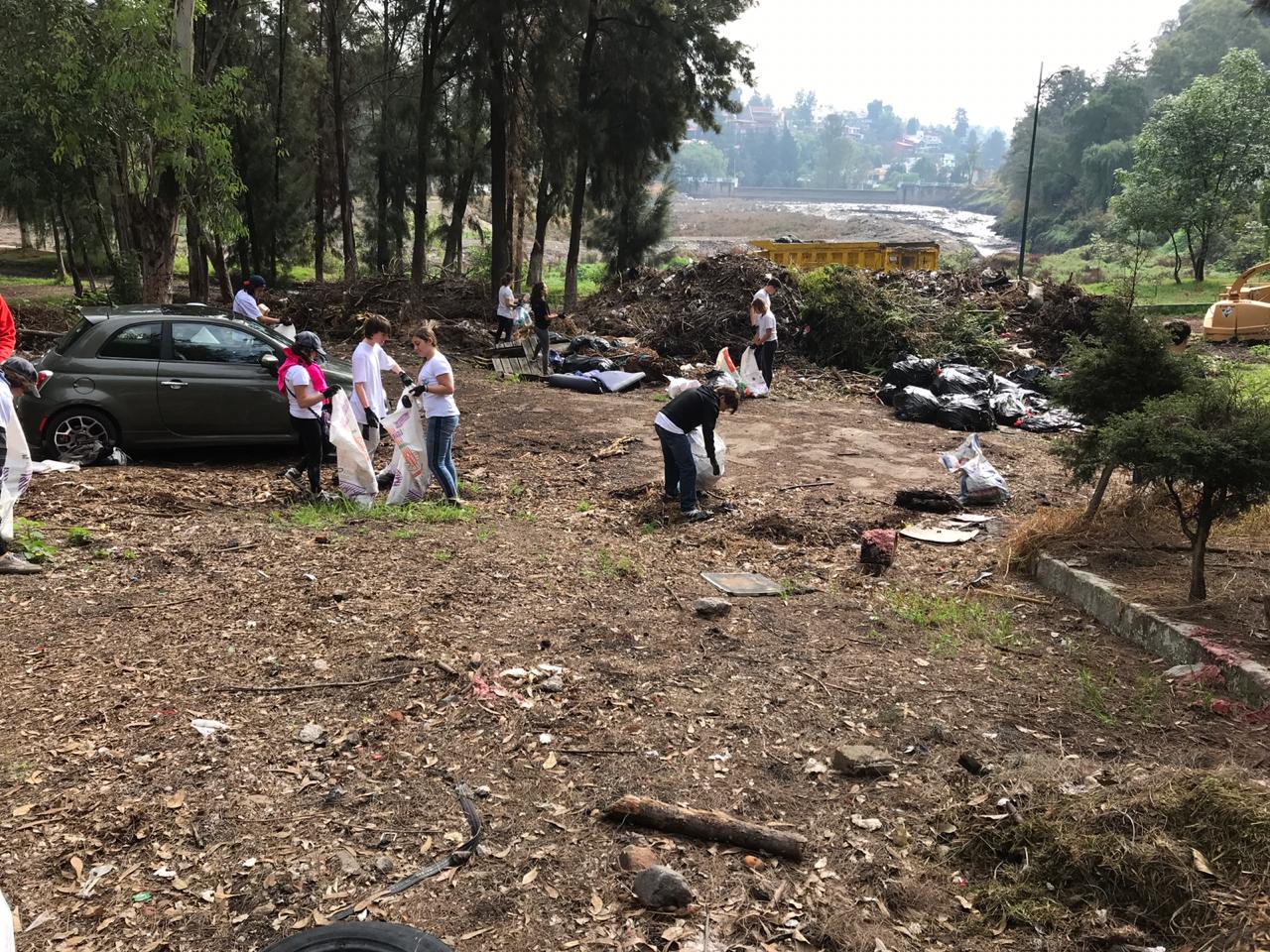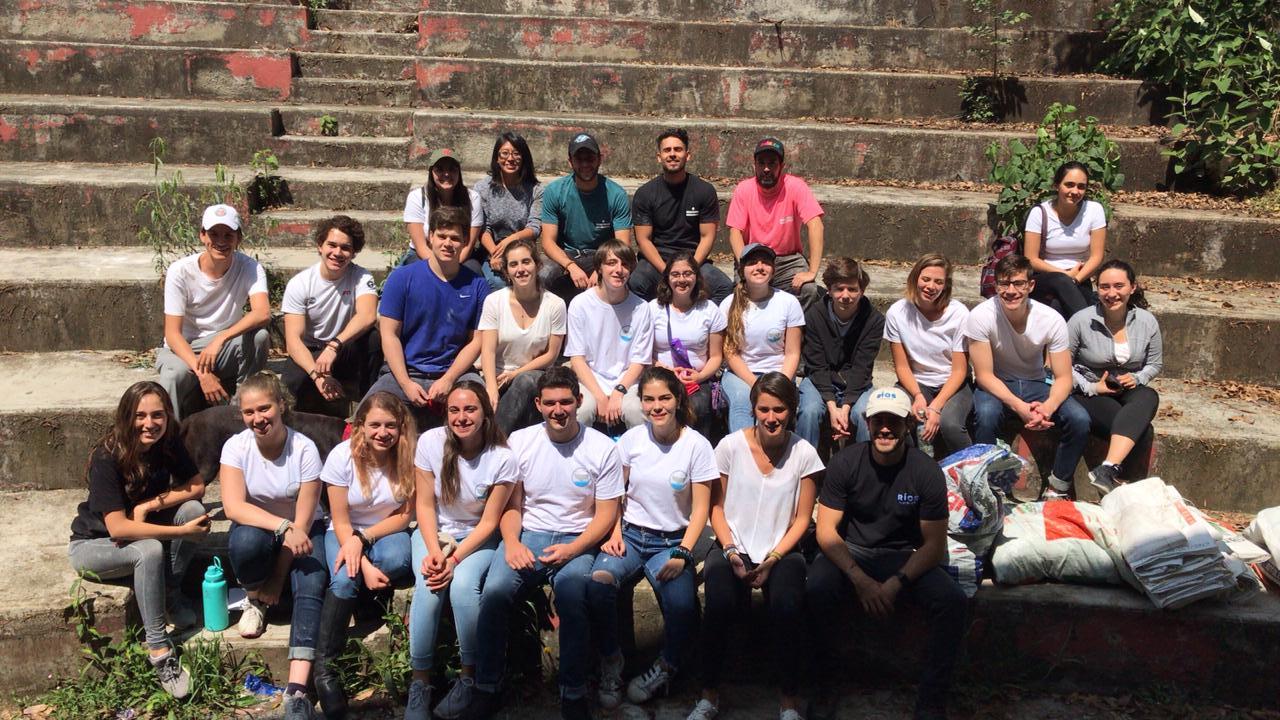Earth, plastic, mats, trees, bags, water … all coexisting in the same space.
We, as inhabitants of Mexico City, one of the largest metropolises in the world, have a great responsibility regarding the waste generated within the city. All the garbage that we generate day by day, and that we remove from our houses, disappears from our near reality but not from the larger world. Sadly, natural areas, the oceans in particular, have become designated dumps of everything we call garbage. Cities are largely responsible for the serious effects this has on terrestrial and marine ecosystems at all levels.
On Saturday, June 8 (World Oceans Day), Plastic Oceans Mexico, together with Ríos Limpios, A.C., organized a clean-up of the Presa del Capulín in La Herradura, Mexico City. This is a highly contaminated dam. In addition to the flow of sewage through it, it contains significant amounts of all types of waste. On other occasions, the dam’s neighbors have filed complaints and concerns about the contamination and the health risks that it represents.
The Presa del Capulín captures the black waters of La Herradura, which later, like many rivers in the world, end up emptying into our oceans. Therefore, all the waste that is here sooner or later will be washed away by the natural cycle of water to the sea. For this reason, a cleanup at this specific point was highly significant and symbolic to commemorate World Oceans Day. We sought to create awareness about these areas within cities, which despite being far from coastal areas, have a serious impact on the marine environment.

Cleaning up the Capulín Dam.
When cleaning started, it was really shocking to notice the amount of garbage that we found, which was only on the surface of the dam. It is chilling to think of everything we cmight find in the rest of the place. This motivated us to really make an effort and collect as much waste as possible. We found everything from old furniture, cigarette butts, plastic wrappers, PET and HDPE containers, bags, detergent containers, diapers, carpets, clothes, wheels … and the list goes on. In total we managed to capture almost half a ton of waste. The numbers are impactful, as we could not cover a quarter of the dam.
This type of clean-up, apart from ridding the area of waste and pollutants since they are not cleaned up constantly and continuously, has a great capacity to raise awareness with individuals. Being aware is the first necessary step towards concrete action. We were very pleased to have the help of the youth from the area, who represent the future of our country and the world. These young people are the ones who are going to push Mexico towards greener, more conscious decisions. We are pleased to share our concern with then and plant that seed of change, beginning with personal actions. We encouraged everyone to think about the following regarding plastic waste: What is overconsumption? What is worth buying? What alternatives are there?

Our circle of volunteers and friends on World Oceans Day.
Everything begins in our close circle of family and friends. Once we have identified what are the alternative choices that can be made personally, we can influence more people. Friends, parents, schoolmates or co-workers are the ones to whom we can relate our experiences and concerns to. Many times you hear that personal change is not going to generate any impact on the planet. However, the awareness that we can plant in other people can transform our current situation in the long term. That idea, accompanied by our example, is very powerful. Its purpose is to expand to our nearby circles, then they can do the same, thereby creating a network of awareness and action.
The Dam del Capulín unfortunately still remains highly contaminated with all types of waste and there is a lot of work yet to be done. However, these types of experiences can encourage the local neighbors themselves to take appropriate action on the matter for their well-being. The contamination in this area is not a new issue. There have been many occasions when there have been complaints from the community and the neighbors’ concern is visible. Also as mentioned before, young people can take advantage of this kind of clean-up; it helps them to understand the problems of their city, to be able to contribute to generating an impact at alocal level, and in the future bet on alternatives to single-use plastics.
Soon we will organize more clean-ups in different areas around Mexico. Stay tuned!
PLEASE DONATE TO PLASTIC OCEANS
